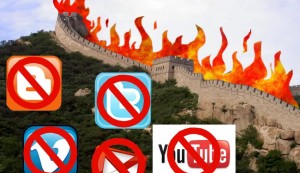https://www.youtube.com/watch?v=oYWl6Wz2NB8
Voluntourism can be considered as a booming travel trend, where tourists volunteer for charitable or developmental causes. These travellers generally seek this type of holiday, as they often have a desire to do something good and experience a different destination. According to Papi, 2012 Voluntourism is one of the biggest growth sectors in the tourism market. One of the most popular Voluntourism sectors is orphanage tourism, especially in Cambodia. For example, in 2011 UNICEF completed a report on Cambodian orphanages and orphans, the research found that ¾ of orphans had 1 or both parents still alive. This market can be considered to be fuelling the separation between children and their parents. This point brings me to an example.
In 2007 Oprah Winfrey opened a school in South Africa called the ‘Oprah Winfrey Leadership Academy for Girls’. Oprah is a prime example of Celebrity activism. The purpose of the school was to provide disadvantaged young girls a quality education. As we all know the key to breaking down the poverty cycle is education. There was speculation at the time of the school opening that the school separated the young girls from their families, as the families were seen as a distraction to their learning. Although the school was established with good intentions, there have been some serious problems that have arisen (refer to ‘serious problems’ hyperlink for detailed article)
These good intentions of volountourists are causing catastrophic results without intention. Within the orphanages many of the children become traumatised because they form bonds and connections with volunteers, and then are left, which dramatically effects their mental development. As a result of this UNICEF ran a campaign attempting to voice the issue of concern with Voluntourism. Suffering children, surprisingly are NOT a tourist attraction, meaning they are not props for volountourists to play with and make themselves feel better.
Volunteerism can be quite damaging, the worst bit is, is that individuals who choose to go on these trips don’t realise the negative effect they are having. ‘ We must learn before we help, otherwise we are causing more harm than good’ states Daniela Papi during her ted Talk. This quote really hit home for me, it makes total sense! In order to actually do good and help we must learn, By learn I mean grasp an understanding that providing resources to a school doesn’t employ a teacher, or giving money to an orphanage doesn’t provide a better life for the orphans, rather a better life for the individuals who run the orphanage, otherwise the issue will never be resolved.
References:
- Farell, Denis. ‘Oprah & Students Cut The Ribbon At The School’s Opening Ceremony’,2009, 25 Aug. 2015.
- Frew, Charlotte. ‘Volunteerism And Celebrity Activism’. 2015. Lecture.
- Hughes, Dana. ‘Dead Newborn Found At Oprah’s School’. ABC News, 2011. Web. 26 Aug. 2015.
- Korkeakoski, Laura. ‘DOES VOLUNTOURISM FULFILL THE CRITERIA OF SUSTAINABLE TOURISM?’Kajaani University of Applied Sciences, 2012. Web. 26 Aug. 2015.
- Leeder, Erin. ‘The Hidden Dangers Of Voluntourism’. Upstart Web. 25 Aug. 2015.
- TedXTalks,‘Whats Wrong With Volunteer Travel ?’. 2012. Web. 26 Aug. 2015.
- org, ‘When Children Become Tourist Attractions’, 2015. Web. 26 Aug. 2015.















